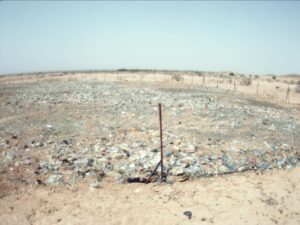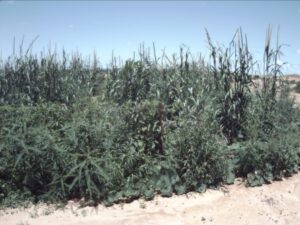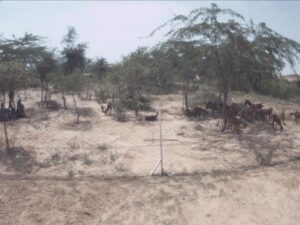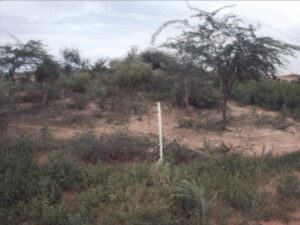Shuichi Oyama is based at the Niger Field Station, where he has been repeatedly experimenting with greening by using urban household waste and putting it into the degraded wastelands since 2012. The greening sites are filled with livestock by Fulbe herders who live in the area and graze them for about a month every year. The details of the process are omitted, but the grazing of livestock induces the germination of trees and the growth of trees. Unnecessary trees are thinned out and turned into pastureland for the livestock. Although it is possible to develop the land into farmland, the emphasis is on supporting the livelihood of minority pastoralists, who are a minority of the population in the region.
In March 2012: When we put in household garbage at a thickness of 10 cm, no trees were growing at all.
September 2012 (first year rainy season): Crops such as pearl millet, sorghum, pumpkins, and gourds grew.
August 2016 (5th year rainy season): Trees are growing vigorously. On the forest bed ground, herbaceous plants that are used as fodder for livestock grow. Some of these plants can be used for human consumption.
In September 2018 (the seventh year of the rainy season): the trees have grown even larger, and by continuing to pollard the lower branches and to thin out the unwanted trees, a pastoral forest has been successfully created. During the hot days, the herders can rest and watch the livestock in the shade of the trees.

March 01,2012

September 06,2012

August 31,2016

September ,2018

September ,2018



 Select Your Language
Select Your Language


